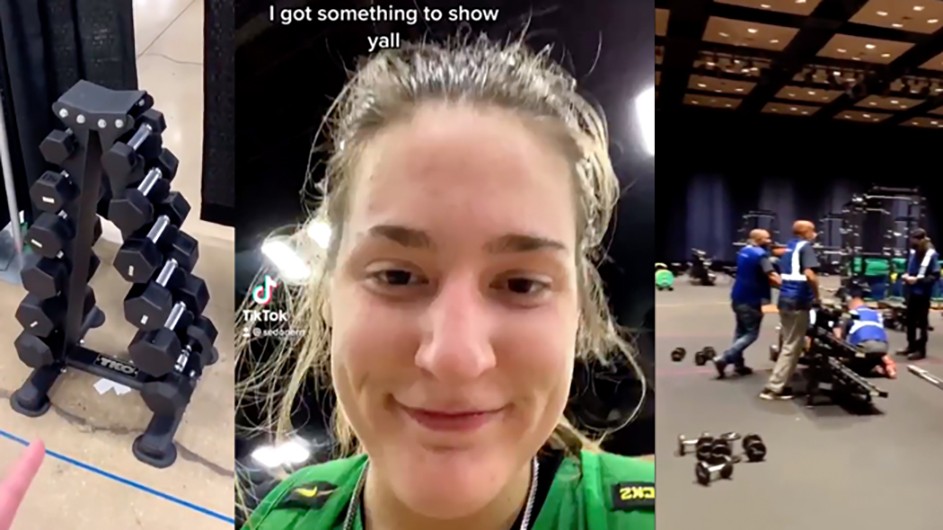Stop Gaming the System
Here’s what the NCAA could do to level the athletic playing field for women and girls.

Ali Ryan-Mosley is studying for a Master of International Affairs degree in Human Rights at Columbia University’s School of International and Public Affairs. This column is editorially independent of Columbia News.
The viral TikTok of the Oregon Ducks’ star player, Sedona Prince, showed the disparity between the men’s and women’s weight “room” for March Madness and it opened up a can of worms for the NCAA: they aren’t enforcing Title IX.
I played soccer at a small liberal arts college in Minnesota, and my collegiate career fell short of my expectations on every level. My coach had never played competitive soccer. The athletic facilities were deemed too dangerous for play. Our team was prohibited from playing at the men's stadium and were relegated to the men's practice field. We were never set up to succeed at the level of our male counterparts. Pay discrimination, a huge problem in professional sports, starts well before that level, and the National Collegiate Athletic Association is getting away with it.
My alma mater has a joint student body but maintains separate institutions, allowing the colleges to skirt Title IX requirements. It’s a perfectly legal example of institutionalized sexism.
In 2021, the women’s rights research group, Champion Women, produced a study uncovering that 90 percent of universities and colleges in the U.S. do not meet one or more standard of Title IX. Their research also exposed that collegiate women athletes, according to Title IX rules, should receive an additional $1 billion in scholarships each year.
My experience of having an unqualified coach and sub-standard playing facilities is commonplace for female athletes in the NCAA, nearly 50 years after the groundbreaking legislation to equalize athletics.
“The sad thing is these young women think they didn’t ‘earn’ a spot on the team or a college athletic scholarship because they weren’t good enough. They think they didn’t work hard enough. They don’t know that they’re the victim of intentional sex discrimination” Nancy Hogshead-Makar, founder of Champion Women, told Ms. magazine in an interview earlier this year.
The Tucker Center, the University of Minnesota research organization on girls and women in sport, found that only 40% of the women’s teams across all divisions are coached by women. This pattern worsens at the Division I level, where 89% of athletic directors are men. The American Association of University Women discovered that women—including female athletes—hold about two-thirds of all U.S. student loan debt, at least in part because they are not receiving the scholarships they could qualify for if the NCAA enforced Title IX.
Sport needs to do more to honor its promise in law and rhetoric to women and girls. Here are some steps the NCAA could take immediately to level the playing field.
Hire more female head coaches. There should be a mandate to improve the 40/60 female to male percentage coaching ratio to 50/50. Require higher coaching qualifications for women’s sports. The NCAA should require that coach selection committees include more women and student-athletes. Enforce Title IX standard of equal scholarship funding. The NCAA must close the $1 billion scholarship gap between female and male athletes immediately. Simply put, the NCAA should follow the law.
Research has shown that female participation in sports is associated with higher academic and career achievement levels as well as macro improvements in health and well-being of society. In the middle of a pandemic when 100% of December’s job loss in the U.S. economy were jobs held by women, it has never been more critical to invest in women and girls.